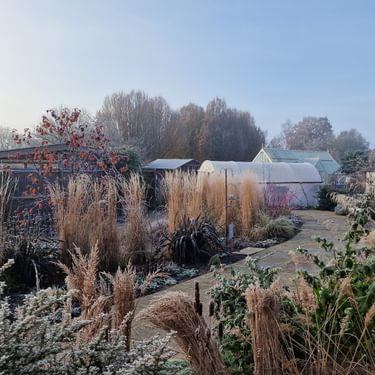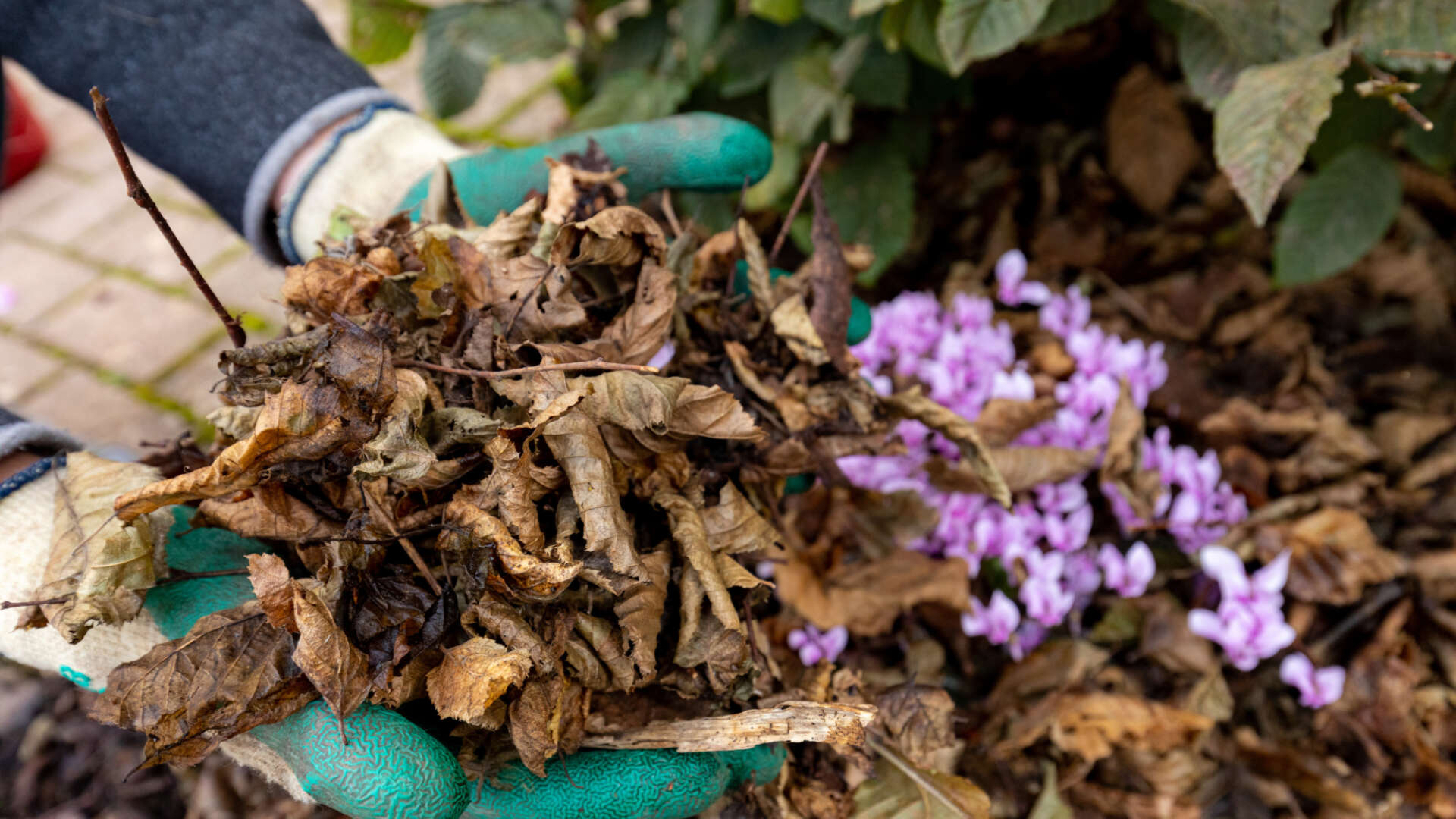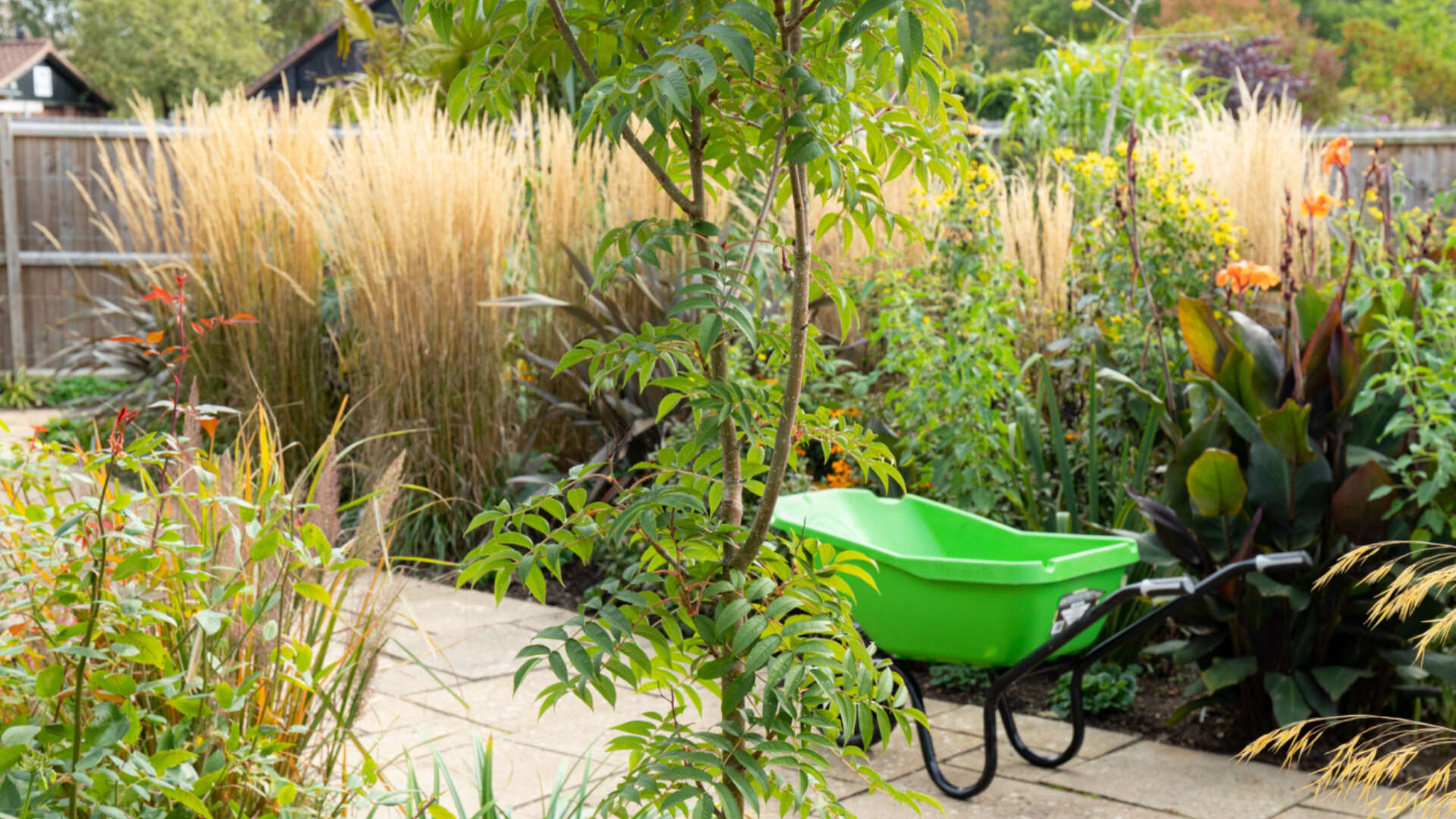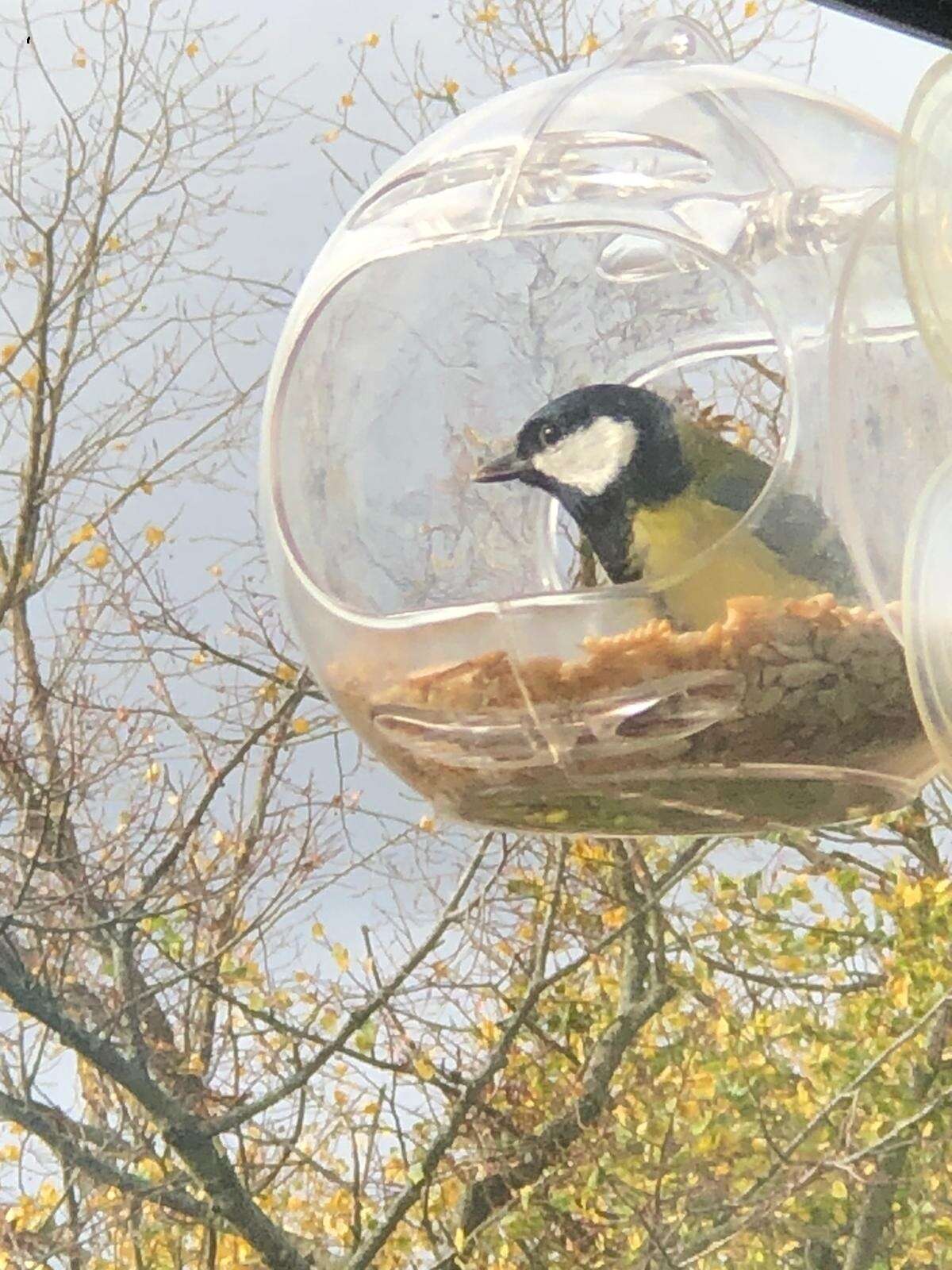
Your organic garden in December
As winter starts to bite, it's time to cover tender plants to protect them from frost damage and enjoy the dark nights. Most pests will be inactive in cold spells, but it’s still worth checking for slugs and snails in sheltered places, such as empty pots in the cold frame or greenhouse.
Soil and composting 🔗
Soil
- Protect bare soil during the winter months. Use autumn leaves as a mulch (cover) during winter weather. If necessary, cover with fleece to prevent wind blowing everything away.
- Continue to collect fallen autumn leaves to make leafmould. Pile them in large bin bags or heaps, keeping them damp.
Compost
- Worm bins kept outside need to be well-insulated to help the worms survive winter conditions. Reduce feeding in cold weather, as the worms will not consume very much at this time. Members can see our factsheet on Worm composting.

Continue to collect fallen autumn leaves to make leafmould. Pile them in large bin bags or heaps, keeping them damp.
Vegetables 🔗
- Garlic can be planted until March.
- Prepare a ‘compost trench’ using the old stems from Brussels sprouts, kale and other tough brassicas once cropping finishes. The trench should be about a spade’s depth, and positioned where runner beans, or other peas and beans will grow next year. Lay the stems along the bottom of the trench, and then roughly chop them up with a sharp spade. Other uncooked vegetable scraps can also be added. As the veg waste reaches the top of the trench, cover over with soil.
- Start planning your crop rotation for next season’s vegetable plot. If you already have a rotation plan, just make a note of where next year's crops will go. If this is your first year, make a list of all the vegetables you would like to grow, then check out our guide to planning your planting
Pest & disease watch
- If your leeks, onions or other alliums were attacked by leek moth or allium leaf miner, dig over the plots so the birds can feed on any over-wintering pests in the soil.
- Comfrey rust can be a major problem if it takes hold. If necessary, remove plants completely and re-place with new stock next year.
- Remove and compost dead and yellowing leaves from winter brassicas. They can encourage fungal diseases and harbour pests.

Start planning your crop rotation for next season’s vegetable plot. If you already have a rotation plan, just make a note of where next year's crops will go.
Fruit 🔗
- Check the condition of all stakes, supports, ties and rabbit guards for trees. Look for wind rocking or constriction. If this has happened, replace stakes and renew ties.
- Continue to plant new trees and bushes supplied as ‘bare rootstock’. See How to Grow Fruit. Always use a new, clean spot, not the where the same plants have just been growing, to avoid 'specific replant disease'. If there is no alternative, backfill the hole with fresh soil mixed with manure, garden-made compost or mycorrhizal fungi.
Pest & disease watch
- Pick every last fruit off fruit trees. Fruit hanging on trees over winter is one of the main sources of brown rot infection in the spring. It is better not to put infected fruit on the compost heap, to prevent perpetuation of the disease.
- Check grease bands are still sticky and in place around fruit trees and stakes to give control against winter moth, plum fruit moth and March moth. Replace where necessary.
- Check rabbit guards too
You may also like


Entice birds into the garden to eat winter aphids with fat balls hanging in trees or suspended from bamboo canes set among fruit bushes and canes.
Herbs 🔗
- Look for bay tree leaf edges thickened and curled over. The sucker nymphs live there under a white woolly wax. Remove all affected leaves and clear away any leaf litter at the base of trees where adults will over-winter. Don’t throw leaves in the compost heap, put all material into the green waste bin.
Flowers 🔗
- Winter pansies can be affected by Downy mildew and leaf spots. Deadhead regularly and remove diseased leaves on sight.
- Plan next year’s garden now. Try to have something in flower year-round, which is essential for the wildlife that plays such an important role in keeping your organic garden healthy.
Keeping the growing area healthy 🔗
- Spider nests are everywhere at the moment, filled with eggs ready to hatch next May. The baby spiders appear just as their prey does, and hungry spiders will consume vast quantities of insects, so nurture these predators-to-be.
- When picking holly and ivy for Christmas decorations, spare a thought for the Holly Blue butterfly, (Britain’s only butterfly which is blue on both sides). It relies on both plants for survival - the caterpillars feed on ivy flowers, and the females lay eggs on holly buds. By December it’s larvae will have crawled in amongst the fallen dead holly leaves, waiting for spring before hatching
Greenhouse
- Remove dead/dying foliage regularly from over-wintering plants to prevent mildews and moulds taking hold.
- Whitefly will often colonise over-wintering potted-up fuchsia plants. Use insecticidal soap to keep things under control; it’s too cold now to use the biological control. If plants are badly infested, carry them outside very carefully in order not to disturb the whitefly. Once outside shake vigorously to dislodge the insects and quickly replace back inside the greenhouse and shut the door.
Ponds
- Ponds are best left alone at this time of year as frogs and other creatures are hibernating, and should not be disturbed.
Houseplants
- Reduce watering now as plants aren’t growing much, and leaves don’t lose moisture in cool conditions. Keep plants just moist.
- No need to feed plants between now and March.
- Mist the underside of leaves to keep humidity high. This deters red spider mite.
You may also like

Join Garden Organic!
By becoming a Garden Organic member you can join thousands of people who are already leading the movement for an organic and sustainable future for us all. And get great member benefits!
Join today